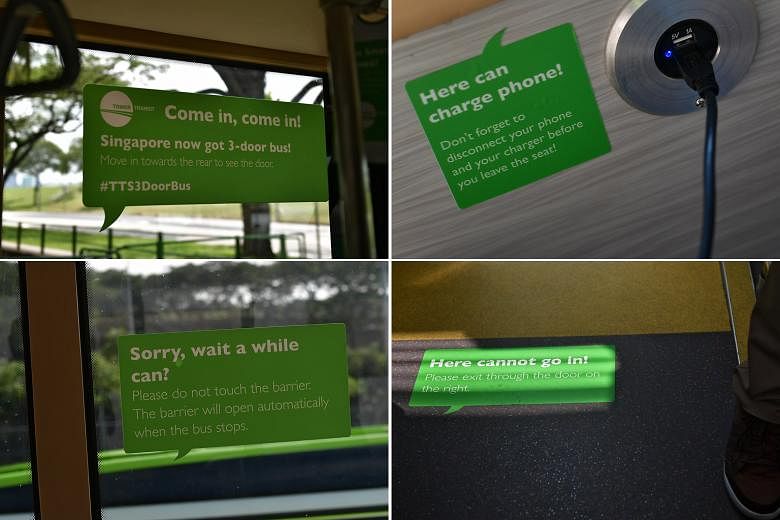Commuter-friendly features such as USB charging ports on board are not the only things that are different about Tower Transit Singapore's new double-decker bus.
Just as eye-catching are the new passenger signs, including "Here can charge phone!" and "Sorry, exit the other side can?".
The firm's group communications director Glenn Lim said the Singlish headlines were meant to "grab the passengers' attention, so they will read what is beneath".
The signs will be on the bus only during the six-month trial period.
While all the notices have explanations in standard English, at least one commuter disapproved. Said theatre director Charis Vera, who is in her 20s: "While the signs are localised and relatable, they might perpetuate an excuse to not use good English."
Others were less concerned. "It seems to be tongue-in-cheek," said sales executive Kenny Kwong, 55 .
Professor Tan Ying Ying, head of the Division of Linguistics and Multilingual Studies at Nanyang Technological University, said the use of Singlish could inject some fun and, in fact, create more awareness of the information being transmitted.
Mr Zaqy Mohamad, chairman of the Government Parliamentary Committee for Communications and Information, also saw the lighter side. "We should... give some leeway for creative advertising," he said, noting that there were also standard English explanations.

